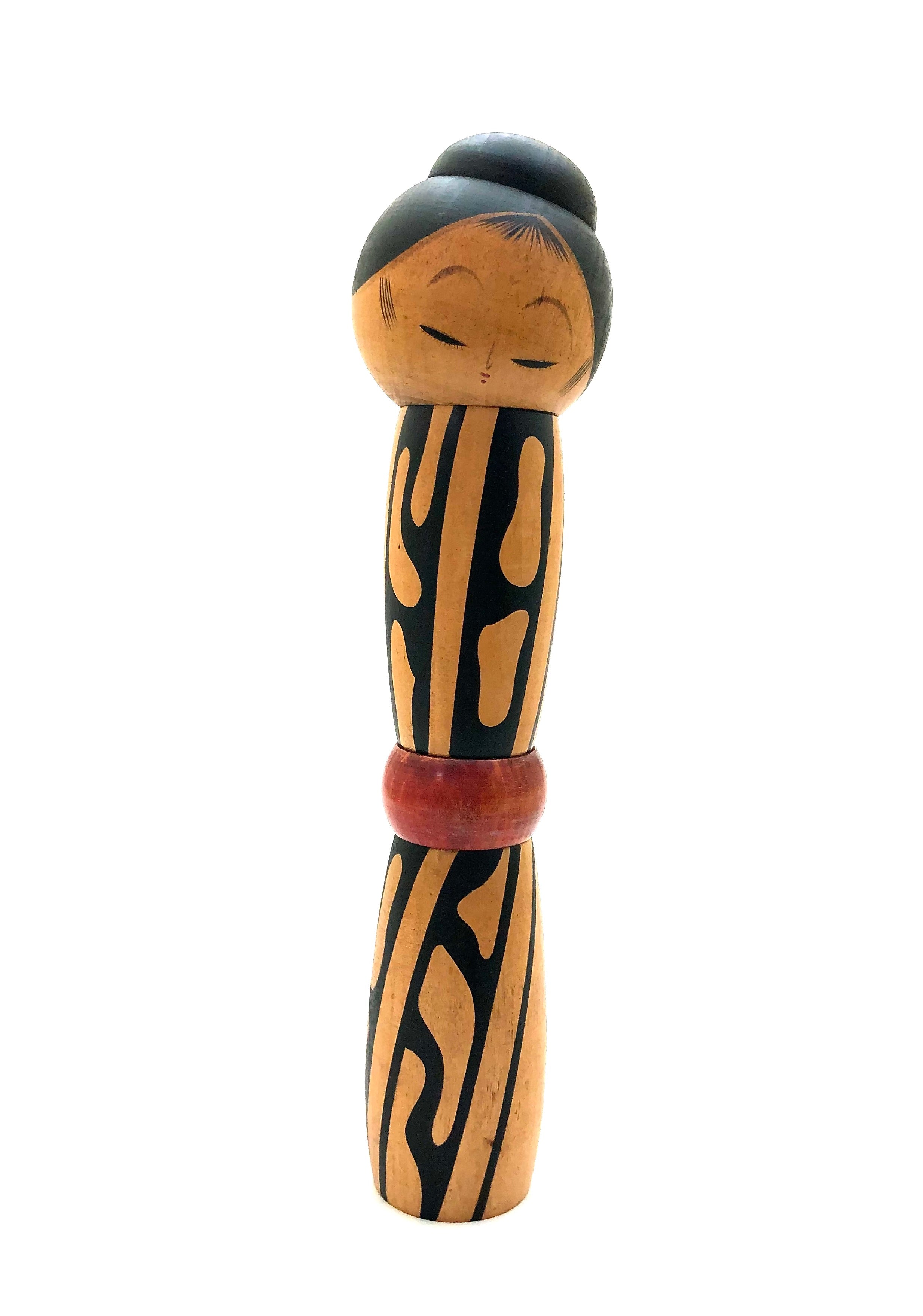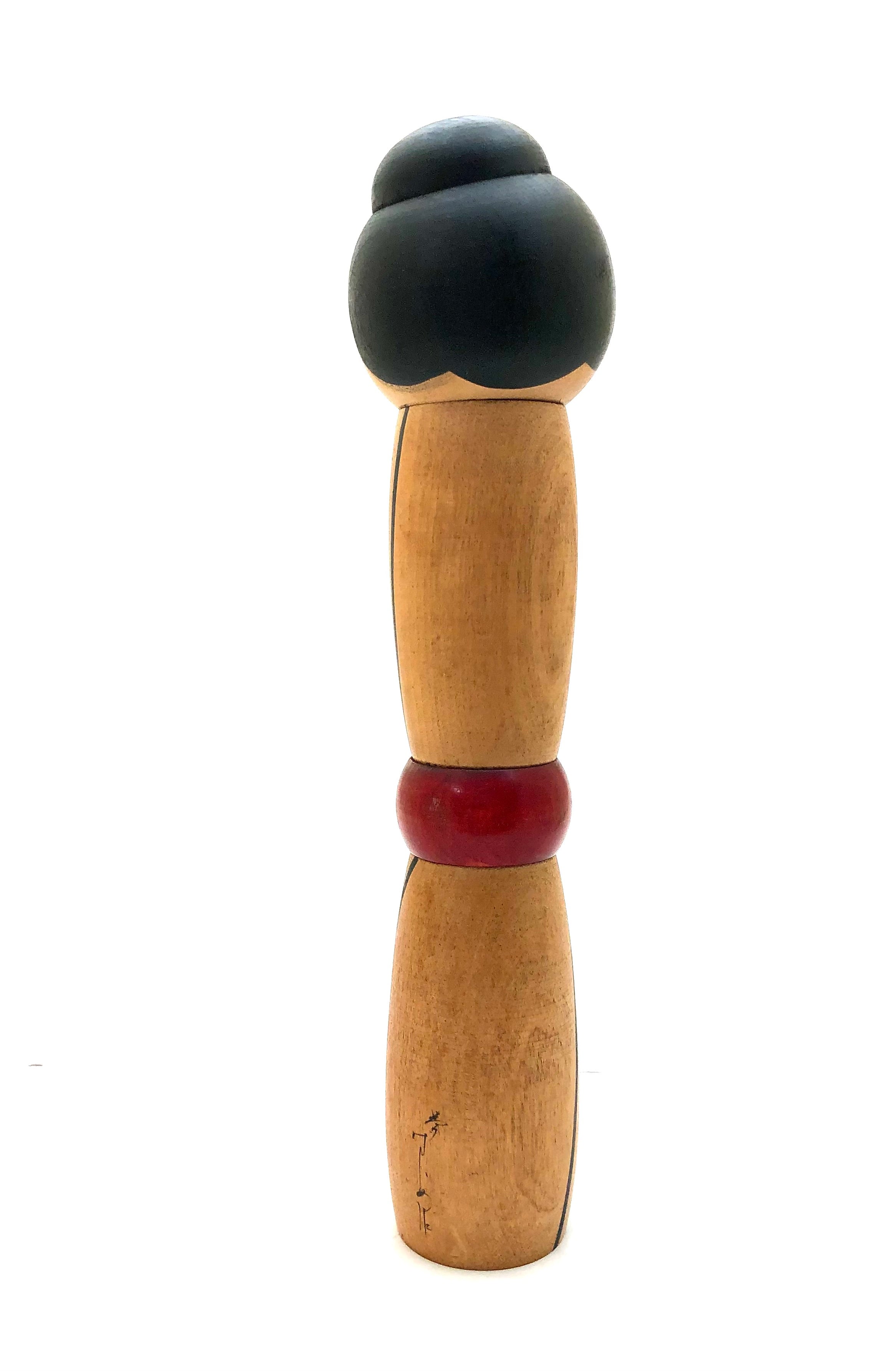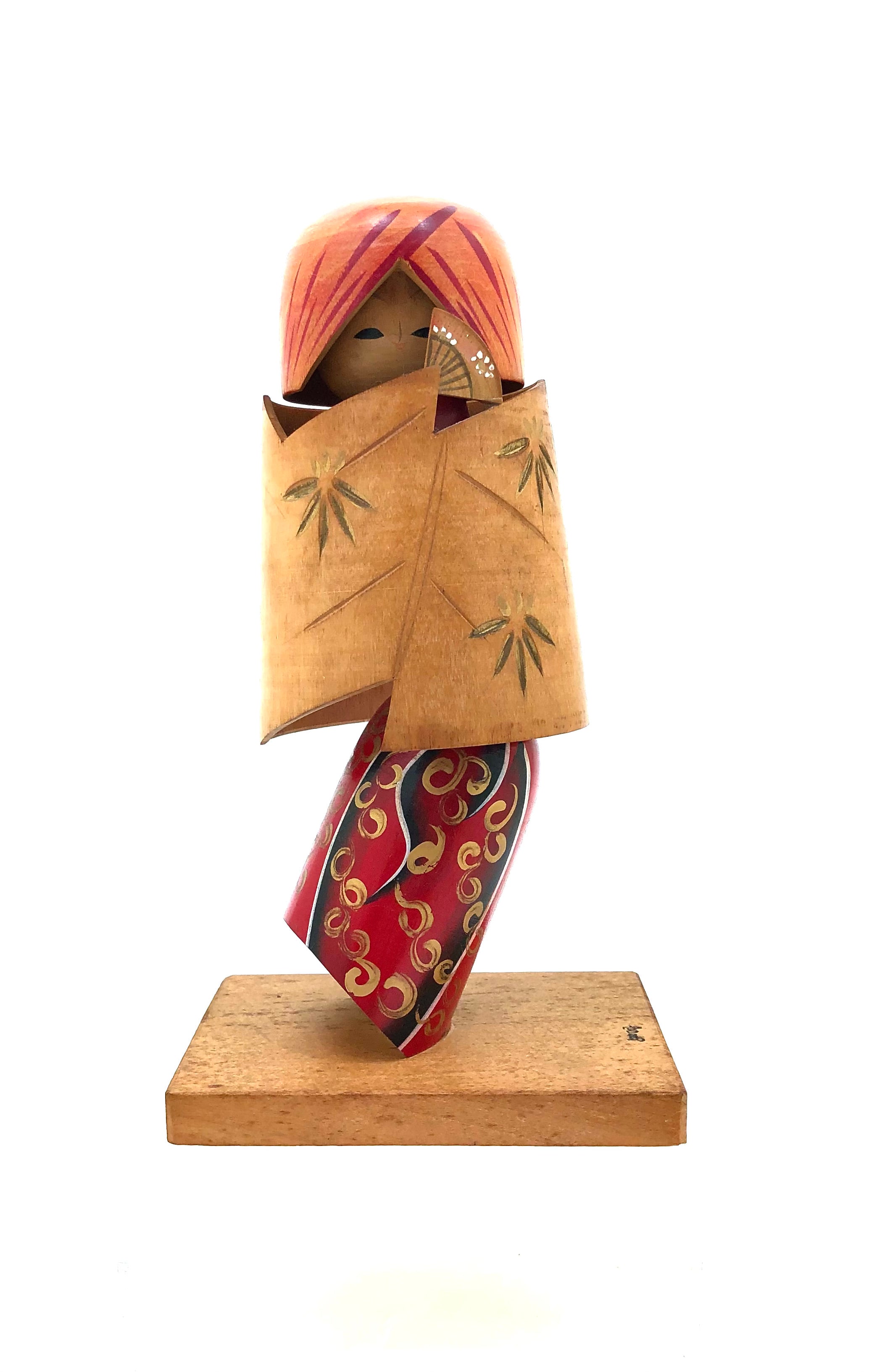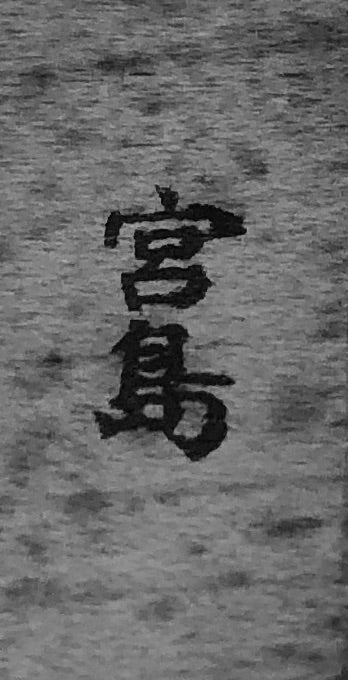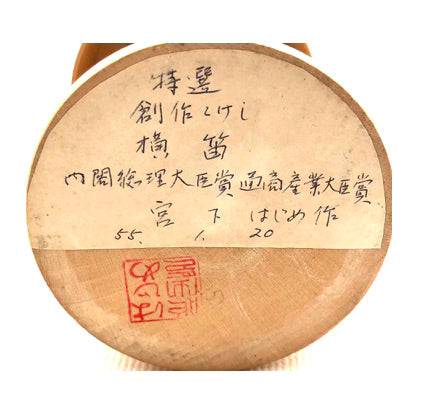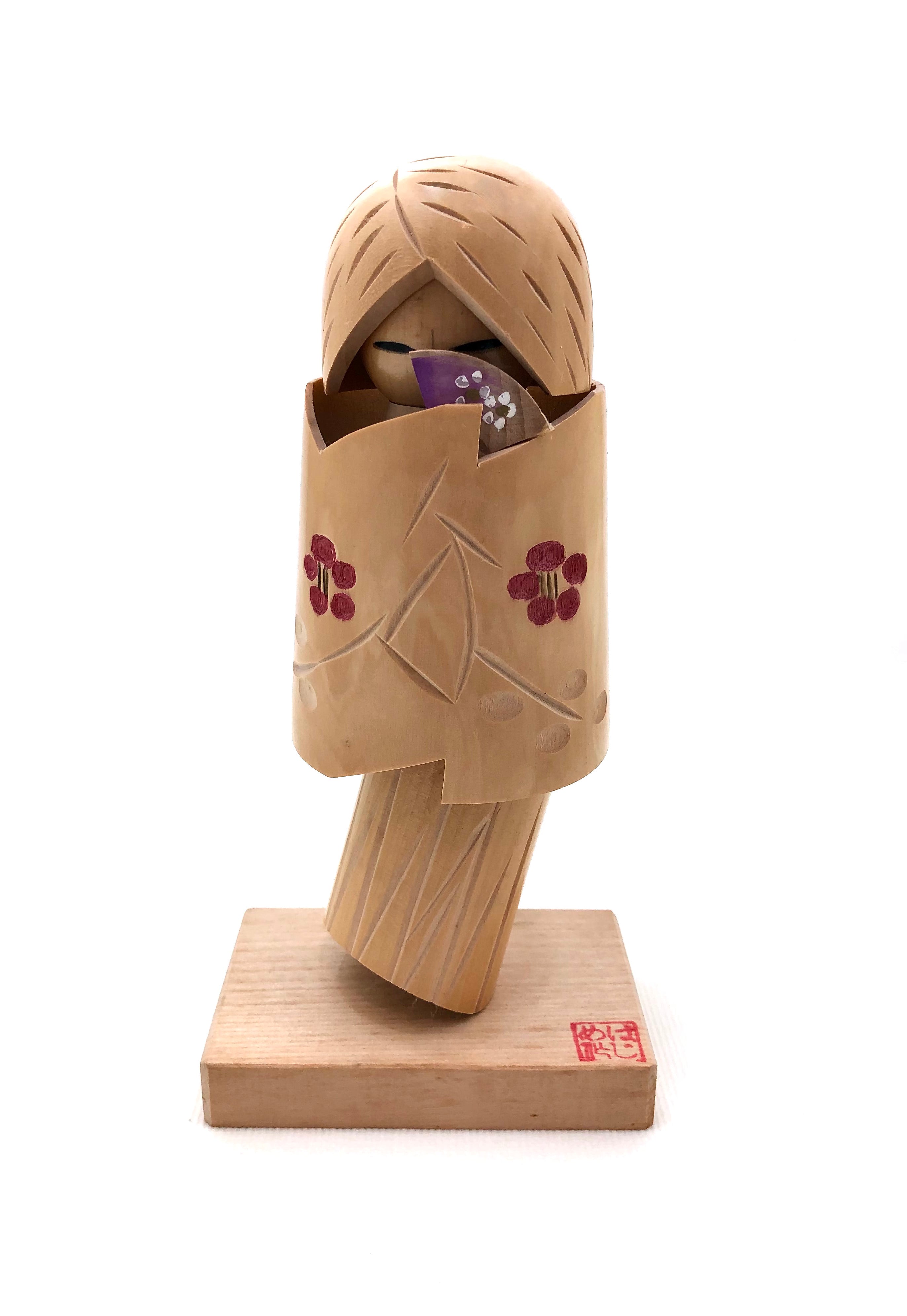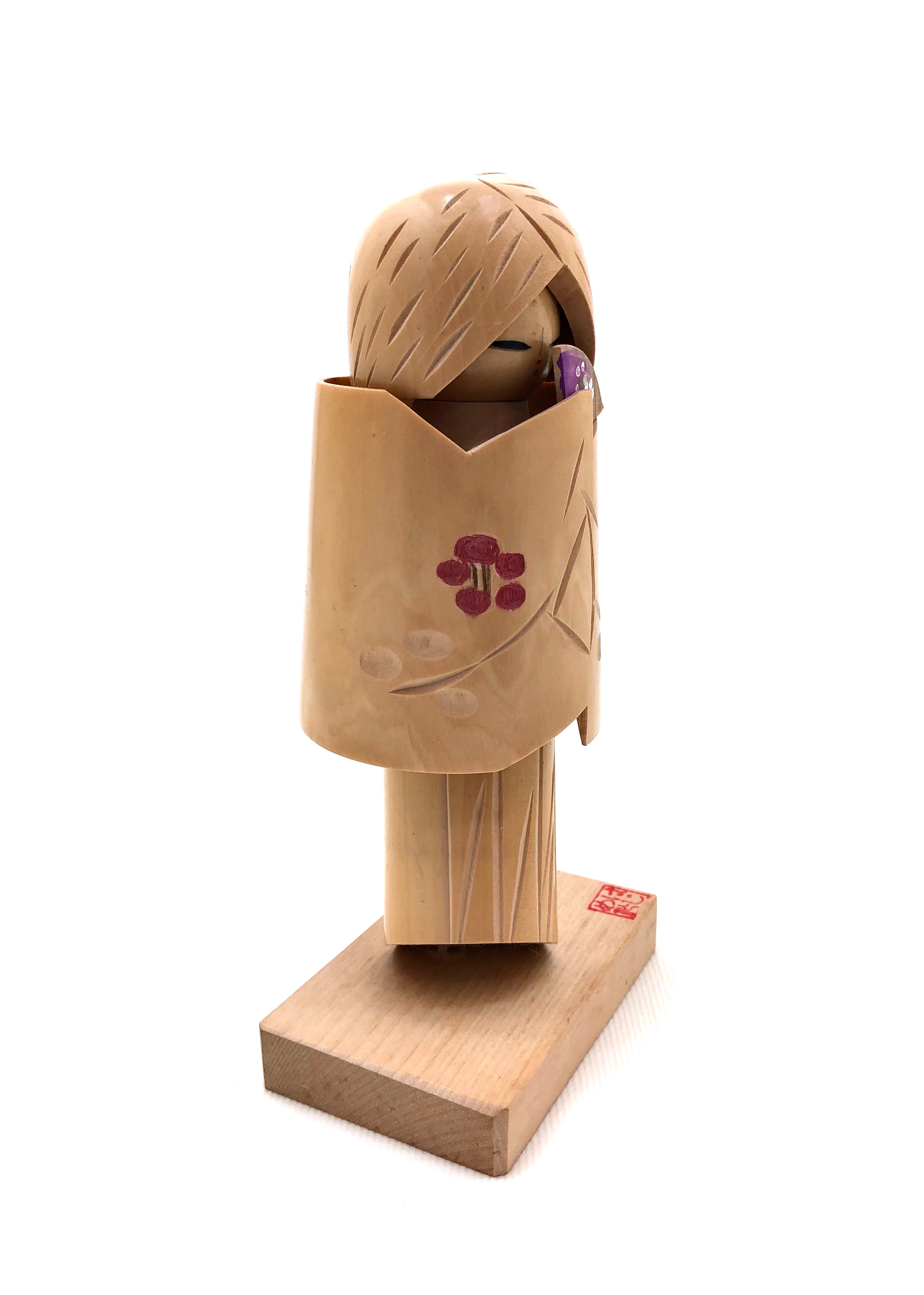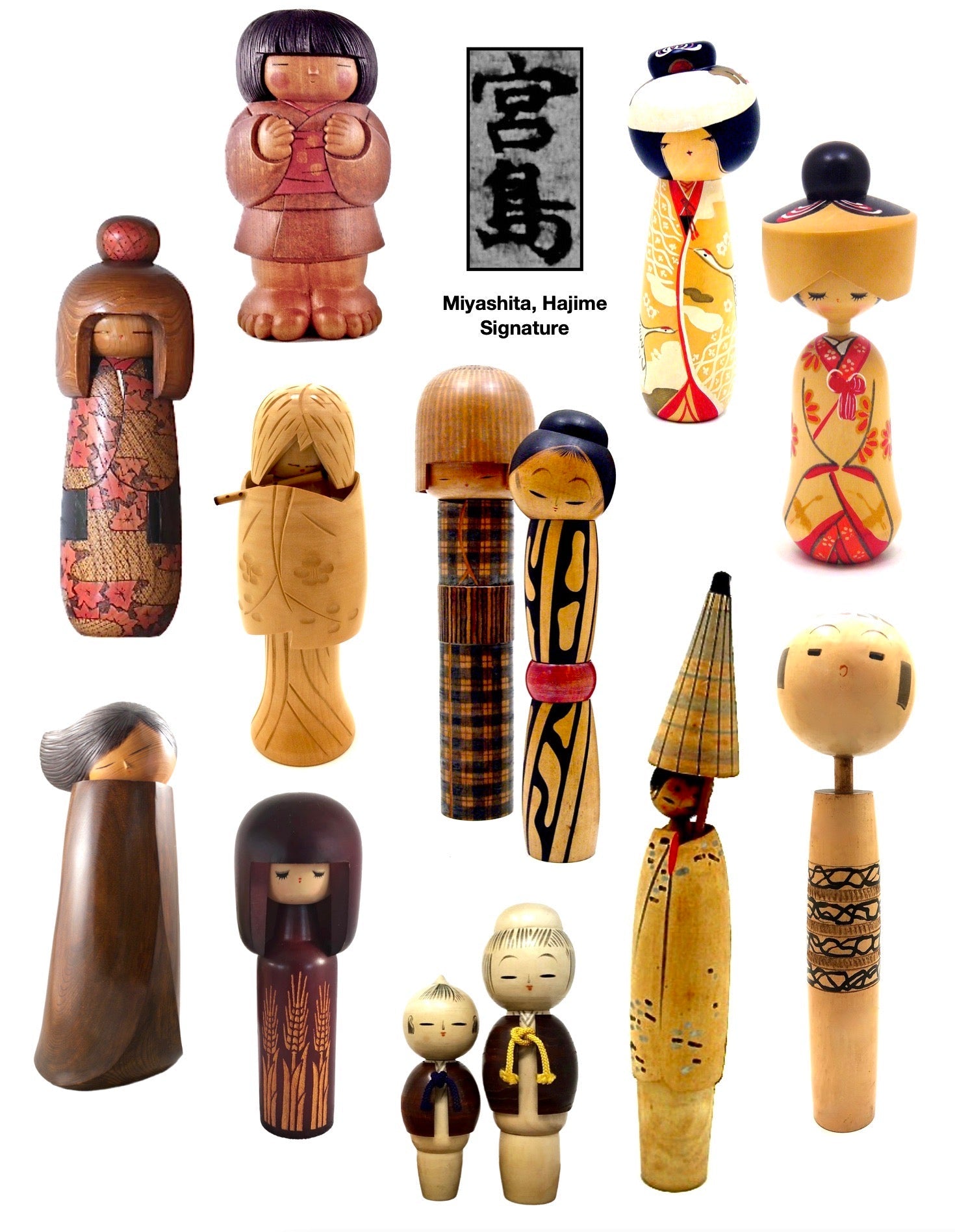
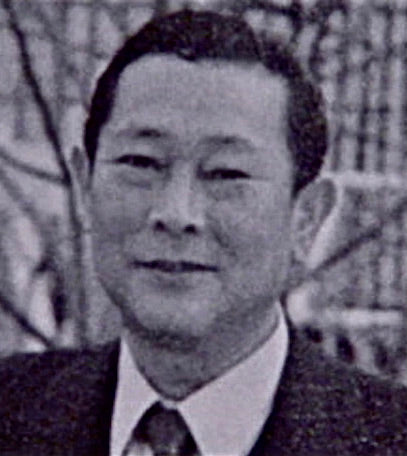
Artisan | Woodworker: Miyashita, Hajime | 1940-R2006
Biographical History:
Born in Yonezawa City, Iwate, Miyashita-san studied traditional kokeshi making under Yamagata-Sakunami Master artist Kobayashi Kichitaro. He began his Sosaku career in 1959, winning many awards, including the Prime Minister’s Award in 1965, and 1977 of which several were purchased in 1969 by Crown Prince Naruhito and Princess Masako and said to be his most culturally sensitive dolls. His studio was located in Maebashi City of Gunma Prefecture, but after it was consumed by fire in 2006, Miyashita-san retired.
Collector's note – descriptive qualities, standard characteristics & ornamentation styles:
Miyashita-san was known for his seasonal themes, such as the period of transition from spring to summer known as ‘tsuyu’, which means ‘rainy season. Traditional umbrellas (Wagasa), are atypical, and rarely used in Kokeshi creations, except for Miyashita’s designs. He also depicts Kabuki dancers known as Kagamijishi, which is a shortened name of the Kabuki dance called the “shunkyo Kagamijishi”. Depicting the Lion dance characters, (Mai, in this instance), was an additional theme for this artist, for it portrayed the spirit of the lion, which is a contrast between the elegant feminity and the dynamic masculine power of the lion's spirit. Miyashita-san depicts brides in traditional wedding attire. One is dressed in a Uchikake, (Brocade), a Kimono with traditional motifs, (chrysanthemums and cranes). Her head is adorned with a traditional cover called a 'Tsuno-kakushi', which refers to the “hiding the horns of jealousy”, and symbolizes a prayer for the marital accord. And finally, he breaks from the traditional Kokeshi form with a later doll showing oversized arms and feet.
Additionally, Miyashita-san created a series of Yukata and festival Kokeshi whose title comes from the works ‘yu’, (bath) and ‘Katabira’, (under clothing), and draped loosely over the body for comfort. Today Yukata and Festval Garents are also worn in bon-Odori dance festivals and competitions throughout Japan. The majority of the dolls are made of dogwood, and display different graphic patterns, with either unique obi or sash, which is also simulated in wood. all of Miyashit-san’s hairstyles illustrate the diversity of individual tastes of the period.


